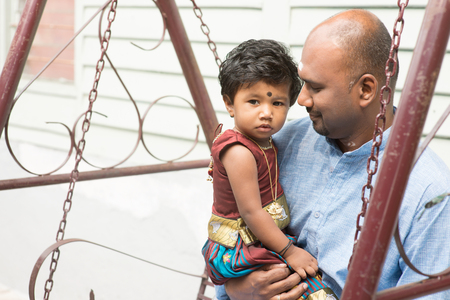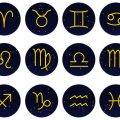Introduction to Muhurat Shastra in Indian Culture
Muhurat Shastra, an integral part of Indian culture, finds its roots deeply embedded in the ancient Vedic traditions. It is the science of determining the most auspicious time or “muhurat” for commencing any important activity. In the context of Indian society, where every phase of life is celebrated with rituals and customs, Muhurat Shastra plays a significant role in shaping daily routines and major milestones. From performing poojas at home to arranging marriages, buying property, or even starting a new business, choosing the right muhurat is believed to ensure divine blessings and success. Especially within the family setting, key moments like childbirth are surrounded by consultations with astrologers and learned pandits to identify shubh samay (auspicious timings). This practice reflects the deep-seated belief that aligning human actions with cosmic rhythms can bring prosperity, harmony, and positive outcomes. The tradition continues to be respected across generations in India, blending spiritual wisdom with cultural values to mark every milestone—from griha pravesh to welcoming a newborn—with sacred timing and hopeful anticipation.
Beliefs Around Auspicious Timing for Child Birth
In Indian culture, the birth of a child is regarded as a highly significant and auspicious event. Families often consult astrologers to select a suitable Muhurat—the most favourable time—for childbirth, especially in cases where delivery can be planned, such as through Caesarean section. This practice is deeply rooted in the belief that the exact timing of birth can influence the childs future, personality, health, and overall destiny.
The selection of Muhurat is based on various astrological parameters such as Nakshatra (lunar constellation), Tithi (lunar day), Yoga, Karana, and planetary positions. Among these, preferences for certain Nakshatras and Tithis are particularly prominent. For example, Nakshatras like Rohini, Pushya, and Anuradha are considered very auspicious and believed to bless the newborn with prosperity, intelligence, and good fortune. On the other hand, some Nakshatras are generally avoided due to traditional beliefs about their negative influence.
Astrologers also assess the Tithi on which the child is expected to be born. Auspicious Tithis such as Dwitiya (2nd), Tritiya (3rd), Panchami (5th), Saptami (7th), Dashami (10th), Ekadashi (11th), and Trayodashi (13th) are commonly preferred. These choices are thought to enhance qualities like wisdom, strength, compassion, and success in the child’s life.
Commonly Preferred Nakshatras & Tithis
| Nakshatra | Significance | Tithi | Significance |
|---|---|---|---|
| Rohini | Growth, charm, creativity | Panchami (5th) | Wisdom & prosperity |
| Pushya | Nourishment, auspiciousness | Saptami (7th) | Success & strength |
| Anuradha | Loyalty, fame, discipline | Ekadashi (11th) | Spiritual growth & health |
| Uttara Phalguni | Friendship, leadership | Trayodashi (13th) | Auspiciousness & fulfilment |
How These Choices Impact the Child’s Destiny
The prevailing belief is that a well-chosen Muhurat aligns cosmic energies favourably for the newborn. By ensuring the child’s horoscope begins under positive influences—right Nakshatra, Tithi, and planetary positions—families hope to secure blessings such as intelligence (buddhi), health (aarogya), happiness (sukh), and prosperity (samriddhi). This cultural practice highlights how love for the child’s wellbeing blends seamlessly with spiritual traditions in Indian society.

3. The Role of Astrology and the Panchangam
In Indian culture, astrology and the Panchangam play a pivotal role in determining auspicious timings for significant life events, including child birth. The ancient wisdom of Muhurat Shastra relies heavily on astrological calculations to select the most favourable moment for delivery. Families often consult experienced astrologers to cast the Janam Kundali (birth chart) of the child, which is believed to influence their destiny, health, education, and even marriage prospects.
Understanding Panchangam in Child Birth
The Panchangam, or traditional Hindu calendar, provides detailed information about planetary positions, lunar days (Tithi), constellations (Nakshatra), and other astrological factors at any given time. Parents and elders refer to the Panchangam to ensure that the chosen time for delivery aligns with positive influences, minimising negative effects from Grah Dasha (planetary periods). This careful selection is believed to enhance the child’s well-being and luck throughout life.
The Significance of Grah Dasha and Janam Kundali
The timing of birth determines the precise planetary positions that form the basis of a childs Janam Kundali. Astrologers analyse Grah Dasha to predict how different planets will impact various aspects of the child’s future. For example, if a baby is born during a favourable Dasha, it is thought to bring prosperity and happiness. Conversely, certain periods may be considered inauspicious, prompting families to avoid those times for elective deliveries.
Cultural Importance and Modern Practice
This deep-rooted faith in astrology and Panchangam continues to shape modern practices across India. Even with advances in medical science, many families prefer scheduling C-sections or induced births based on astrological advice. Terms like Shubh Muhurat are commonly used when discussing preferred timings among relatives. Ultimately, these traditions reflect the enduring belief that cosmic alignment at birth lays the foundation for a harmonious and successful life journey.
4. Cultural Practices and Family Perspectives
In Indian culture, the concept of ‘Subh Muhurat’ plays a vital role in almost every significant life event, including childbirth. Families across various regions uphold traditions that revolve around choosing the most auspicious timing for welcoming a new member into the family. This section delves into real-life stories and common practices observed among Indian families, while also exploring societal expectations and the deep emotional value attached to Muhurat Shastra.
Typical Practices in Indian Households
It is common for families to consult an astrologer or a family priest (Panditji) when expecting a child. The astrologer examines the alignment of stars and planets to determine the most favorable period for delivery, especially if a Caesarean section is being considered. In some homes, elders actively participate in discussions about the muhurat, reinforcing age-old beliefs that the right timing can shape the child’s destiny.
Societal Pressures & Emotional Importance
The desire to follow Muhurat Shastra is often influenced by societal expectations. Relatives and neighbors may inquire about whether the delivery was planned according to an auspicious time. For many parents, ensuring their child is born during a ‘Shubh Muhurat’ brings peace of mind, believing it will ensure health, prosperity, and good fortune throughout the child’s life.
Stories from Indian Families
Consider the story of Priya Sharma from Jaipur, whose family insisted on scheduling her C-section at 3:15 AM because the astrologer declared it as “the golden window” for luck and intelligence. Another account comes from a Tamil household where three generations gathered to select a time based on both astrology and family tradition, reflecting how emotional bonding is interwoven with spiritual customs.
Comparing Family Approaches to Subh Muhurat
| Region | Role of Elders | Astrologers Influence | Community Expectations |
|---|---|---|---|
| North India | Very Active | High | Significant |
| South India | Active | Medium-High | Moderate-Significant |
| Urban Cities | Variable | Medium | Diminishing but Present |
The Emotional Connection with Auspicious Timing
The emotional attachment to finding a Subh Muhurat is deeply rooted. For many, it goes beyond ritual; it is seen as expressing love and care for the unborn child’s future. This emotional investment creates strong memories and stories that are passed down through generations, becoming part of family folklore.
5. Modern Medical Perspectives vs. Traditional Beliefs
In contemporary India, the intersection between age-old traditions like Muhurat Shastra and the scientific approach of modern medicine often sparks vibrant debate, especially regarding childbirth. Many Indian families still consult astrologers and priests to determine the most auspicious time for a child’s birth, seeking blessings for health, fortune, and harmony in their baby’s destiny. This cultural preference influences not only natural deliveries but also prompts requests for elective caesarean sections at specific muhurats.
Views from Indian Medical Professionals and Hospitals
Leading obstetricians and gynecologists across India acknowledge the prevalence of these beliefs among their patients. While some hospitals offer flexibility in scheduling C-sections, most Indian medical professionals emphasize the importance of prioritizing the mother’s and newborn’s health over astrological timings. They often advise that while families may wish to choose an auspicious moment, medical safety must not be compromised.
The Ethical Debate: Elective Caesareans for Auspicious Timings
One of the most significant ethical dilemmas faced by doctors is whether or not to agree to perform caesarean deliveries solely based on an auspicious muhurat chosen by astrologers. On one hand, healthcare providers strive to respect cultural sentiments; on the other, they are bound by the Hippocratic Oath to act in the best interests of both mother and child. There have been instances where pressure from families has led to elective surgeries scheduled at odd hours, raising concerns about unnecessary risks and complications.
Navigating Tradition and Science
The ongoing dialogue between tradition and science is shaping new norms within Indian maternity care. Progressive hospitals are attempting to educate families on balancing faith with factual medical advice—suggesting that a healthy delivery is the greatest blessing, regardless of timing. Meanwhile, some practitioners are open to minor adjustments in schedule if it does not endanger maternal or infant well-being.
Ultimately, as India continues to blend its rich spiritual heritage with advancements in healthcare, families, doctors, and religious advisors must work together to ensure that both tradition and safety are honoured during one of life’s most precious moments.
6. Effect on Child’s Life: Myths, Realities, and Contemporary Views
Beliefs About Birth Timing in Indian Culture
In Indian tradition, the exact moment of a child’s birth—known as Janma Lagna—is thought to influence not just their destiny but every facet of their life journey. Families often consult astrologers to determine how the Muhurat (auspicious time) at which a child is born will shape their personality, prospects, and relationships. It is widely believed that a favourable Muhurat can ensure a harmonious love life, strong compatibility with future partners, and even attract positive energies for career growth and health.
Love Life and Compatibility: Ancient Perspectives
According to Vedic astrology, the planetary positions at birth create a unique Kundli or horoscope for each individual. This chart is frequently used later in life for matchmaking (Vivah Milan). Many believe that children born during auspicious timings are blessed with greater emotional stability, romantic harmony, and marital bliss. Parents hope that an ideal Muhurat will make their child’s future Grihastha Ashrama (married life) smooth and filled with mutual understanding.
Career and Health: Promises and Precautions
The belief extends further: Muhurat Shastra asserts that being born under certain nakshatras (constellations) or yogas (planetary combinations) can bestow success in education, good fortune in professional pursuits, and robust health. Some families may even select C-section timings to ensure alignment with beneficial planetary influences. However, there are also cautions against being born during ‘Rahu Kaal’ or other inauspicious periods, fearing obstacles or ill health.
Modern Perspectives: Myths Versus Scientific Insights
While these traditions continue to be deeply respected in many Indian households, contemporary views are evolving. Recent research suggests that genetics, upbringing, social environment, and access to resources play far more significant roles in shaping a child’s love life, compatibility patterns, career trajectory, and health outcomes than the precise timing of birth. Medical professionals generally advise parents not to overly stress about delivery times unless there are clear medical reasons.
Bridging Tradition and Modernity
Despite the lack of scientific evidence supporting astrological influence on one’s life based on birth timing, many Indian couples still find comfort and cultural continuity in following these rituals. For them, selecting an auspicious Muhurat is less about controlling fate and more about expressing love, hope, and blessings for their child’s future. In today’s India—where tradition meets technology—families increasingly balance astrological advice with practical considerations and medical guidance.
Ultimately, whether one believes strongly in the effects of Muhurat Shastra or views it as a cherished cultural custom, the process remains an integral part of welcoming new life in Indian society—filled with symbolism, intention, and heartfelt wishes for happiness in love and beyond.
7. Conclusion: Is Muhurat Still Relevant?
The age-old tradition of Muhurat Shastra continues to hold a special place in the hearts of Indian families, whether in the vibrant lanes of Mumbai or the quiet villages of Uttar Pradesh. Across generations, the quest for an auspicious time for childbirth is more than just a ritual—it’s an emotional journey, filled with hopes for the baby’s happiness, prosperity, and well-being. In urban centres, where lifestyles are fast-paced and influenced by global trends, many families still consult astrologers or use mobile apps to find the most auspicious timing. Meanwhile, in rural India, elders and family priests play a central role in determining these timings based on traditional Panchang calculations. This ongoing blend of faith and modernity shows that while society is evolving rapidly, core cultural values like Muhurat Shastra adapt and endure. It serves as a bridge connecting families across generations and locations, offering reassurance and a sense of control during one of life’s most significant milestones. Whether strictly followed or gently adapted to suit modern schedules, Muhurat Shastra remains a cherished tradition—a testament to India’s rich heritage and the enduring power of love and belief in shaping our most precious moments.

